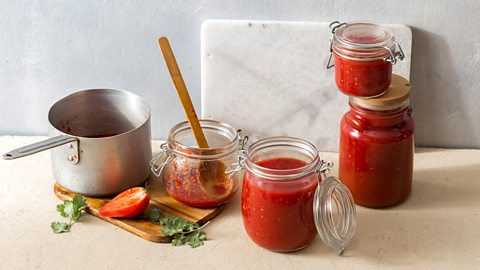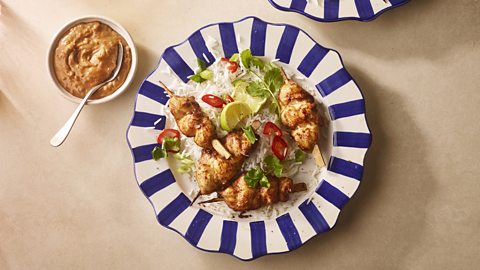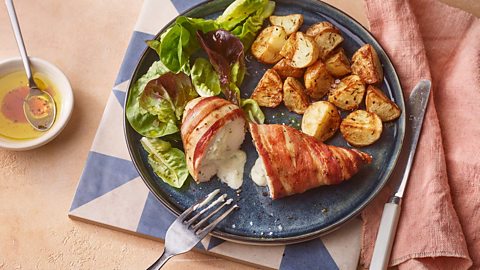How to cook a roast dinner without your oven
These are the energy-efficient techniques you need to cook tender meat joints, crispy potatoes and vibrant veg with no oven.
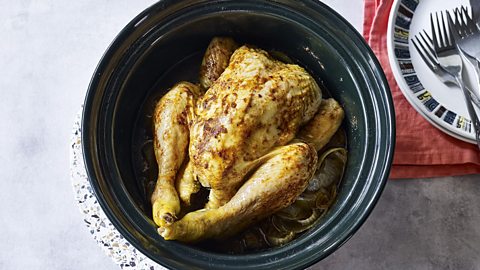
With energy prices climbing and the National Grid encouraging us to use less electricity, many of us are looking for ways to be more economical with our power. And, as ovens are one of the more energy-hungry appliances in our homes, using them less seems like a no-brainer. That is, until we realise that no oven means no roast dinner.
Or does it?
There are actually plenty of other ways that we can whip up a tender joint of meat, crispy, fluffy spuds and all the trimmings you’d hope to see on a Sunday lunchtime spread, all without touching the oven. We’ve spoken to the experts to find out how.
Air fryer
Jenny Tschiesche, author of The Air Fryer Cookbook, explains, “Anything you can put in an oven you can put in an air fryer – and typically it’s going to cut the cooking time by about 20 percent and the heat by about 20C.”
It’s a particularly useful bit of kit when it comes to cooking meat, says Tschiesche. “Most cuts will cook in under an hour. However, it’s important to have a food thermometer to hand as internal temperature is a far better measure of doneness than appearance.”
When using a thermometer, Tschiesche says you should be looking for it to reach the following temperatures:
Beef
Rare: 52C
Medium: 60C
Well done: 71C
Lamb
Medium rare: 55C
Medium: 60C
Well done: 71C
Chicken
- 74C
Pork
- 71C
A vegetarian centrepiece will also work well in the air fryer: “A 3.5-litre air fryer basket would fit a 1lb loaf tin in, which is perfect for a small nut roast. Another option is a filo parcel. Filo works wonderfully in air fryers; it really crisps up. You could make something like brie and cranberry filo parcels, which, incidentally, would also make good starters.”
Air fryer roast potatoes
Speed up the cooking process and save on energy by making these crisp, fluffy-centred roast potatoes in an air fryer
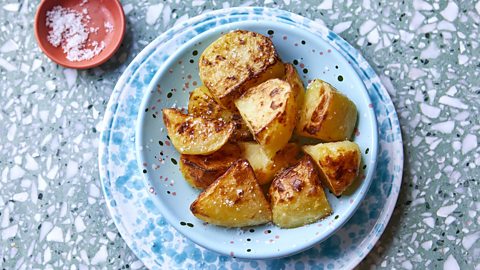
Air fryers also love vegetables – including hasselback potatoes and sprouts – and are great at getting those golden, caramelised edges that we associate with oven-roasting. And that other all-important trimming, stuffing, is a goer in an air fyer, too.
This is especially helpful if you're making your meat ahead or in a different appliance (like a slow cooker) as it means you won't have to turn the oven on just for one dish.
Slow cooker
Author and slow cooking expert Sarah Cook says this old-faithful countertop cooker is perfect when looking for an alternative way to ‘roast’ your meat.
“Slow cooker Sunday lunches mean pull-apart, meltingly tender meat, which sorts itself out while you spend more time enjoying the weekend. Plus, adding liquid to your meat in the slow cooker gives you a ready-made gravy.
“Another bonus is the joints which are best suited to slow cooking are often much cheaper than the leaner alternatives traditionally associated with an oven roast. Pork shoulder is a great example. One of the most affordable cuts of pork, it comes with a little extra fat running through it than you’d get with, say, a leg joint, so has bags of flavour and loves a slow cook. It will take about six hours on low or three hours on high. And if you can’t forego the crackling, remove the skin first and it crisp up in an air fryer to serve.”
Slow cooker roast beef
Cook this roast beef on low for nine hours and you'll be rewarded with meltingly tender meat
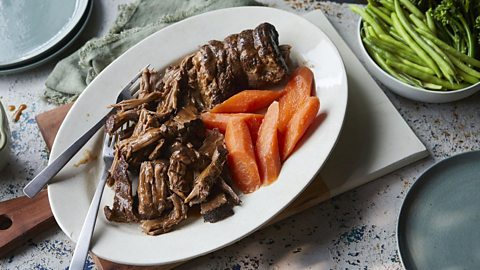
Slow cooked roast beef is just as easy, says Cook. Begin by quickly searing a beef brisket joint then add it to your slow cooker with some veg and cook on low for nine hours. “And for a medium chicken, give it about five hours on low – it’ll be done when the meat on the legs is tender.
"A flash under the grill to finish will add a deep golden hue to the chicken skin that you might be missing, although to save doing this I like to cook it with good covering of very herby butter, so the skin is heavily flecked with parsley, thyme or oregano.
“If lamb is your meat of choice, a whole leg will take about 10 hours on low (it's worth browning it first in a frying pan). If that’s too big for your pot, go for a boneless leg joint which will take about eight hours on low. A shoulder will take the same amount of time, and really suits slow cookers as the fat (which puts some people off) melts away and you can pour it off every few hours.”
Microwave
Jennipher Marshall-Jenkinson, author of Microwave Magic, suggests cooking your veg in a microwave instead of roasting it in the oven. “Nutrients are retained, you’re saving on energy costs and the flavour and the colour of the vegetables is absolutely beautiful.”
It’s a great way to keep things simple and cut down on faff, too. When cooking sprouts, for instance, “just peel them, cut into the bottom, rinse them under a tap and cook them in a covered dish.”
Marshall-Jenkinson highlighted her microwaved veg skills on a recent episode of The One Show, where she prepped and cooked broccoli, cabbage and carrots, all within a few minutes.
You can even, says Marshall-Jenkinson, cook your meat in the microwave. “I’d put a chicken in a roasting bag, lay it in the microwave upside down for 20 minutes and then turn it the other way and to continue to cook.” To get the browned appearance you could rub some paprika or, Marshall-Jenkinson’s personal favourite, Worcestershire sauce, onto the skin before to cooking.
If you want to follow your roast with a comforting dessert, steamed puddings are easy to make in your microwave, too. A super-quick favourite of Marshall-Jenkinson’s is a black forest upside-down pudding.
“Take a 220g packet of chocolate cake mixture and pour into a greased 2L microwavable oven-proof dish. Add 2 large eggs, 6 tablespoons of cooking oil and 2 tablespoons of water and beat together until smooth, scraping down the mixture from the side of the dish.
“Pour a 385g can of black cherry pie filling over the mixture and cook on medium-high for 7-8 minutes until the cake has risen and is spongy. Cover with a dinner plate and let it stand for 1-2 minutes, then flip the dish so the plate's on the bottom to turn it out.”
Syrup sponge in the microwave
For a comforting end to your roast dinner, rustle up this sponge pudding in your microwave
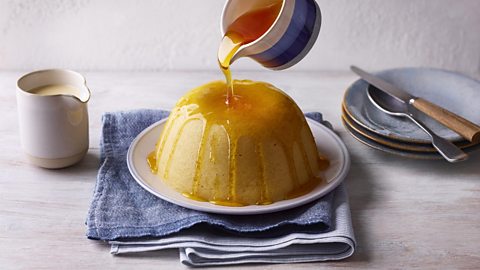
Pressure cooker
Catherine Phipps, author of Modern Pressure Cooking, says pressure cookers not only help you save energy but also to speed up cooking times.
“You can par-boil veg – like potatoes, parsnips and carrots – for just a minute and then they’ll be ready to roast or air fry. Put a little water in the base – just a centimetre is plenty – then salt it, bring it up to pressure, cook for one minute, fast-release and they’ll be done.
“Red cabbage is great in the pressure cooker, too. If you want it to be fairly al dente, cook for one minute, but if you want it soft and melting it needs three.”
The pressure cooker will also make it easy to cook large joints of meat to fall-apart tenderness in half the time of conventional cooking. This is a perfect method for pulled pork and honey roast ham.
Pressure cooker pot roast beef
Using a pressure cooker means you can opt for a cheaper joint – like in this recipe – and it will still be tender
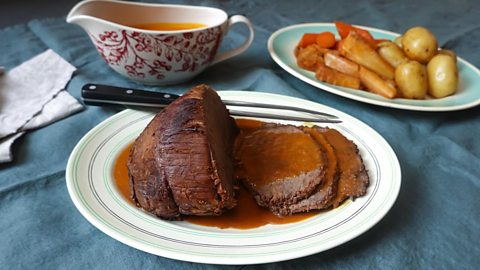
“As for dessert, a sticky toffee pudding works really well. It needs to steam for the first 15 minutes to allow the raising agents to work – this stops the pudding being dense – then can be cooked at high pressure for 30-35 minutes.
“This method also works for steamed sponge puddings and for suet crust puddings too, both bowl type or in the shape of a jam roly-poly.
“If your pudding is large but your pressure cooker isn’t, you don't have to put it on a trivet. Fold up a fabric napkin or a torn piece of tea towel and place it at the bottom. Add your pudding and a couple of centimetres of water in the base and that will stop it jiggling around.”
Originally published January 2023
